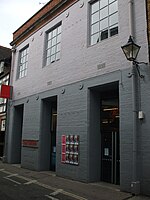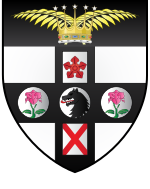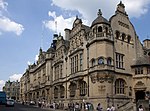St Aldate's Church
Church of England church buildings in OxfordEvangelical churches in the United KingdomGrade II* listed buildings in OxfordGrade II* listed churches in Oxfordshire

St Aldate's is a Church of England parish church in the centre of Oxford, in the Deanery and Diocese of Oxford. The church is on the street named St Aldate's, opposite Christ Church college and next door to Pembroke College. The church has a large congregation and has a staff team of about 30 which includes clergy, pastoral and administrative staff. The offices of the Rector and other members of staff are at 40 Pembroke Street.
Excerpt from the Wikipedia article St Aldate's Church (License: CC BY-SA 3.0, Authors, Images).St Aldate's Church
Pembroke Street, Oxford City Centre
Geographical coordinates (GPS) Address Nearby Places Show on map
Geographical coordinates (GPS)
| Latitude | Longitude |
|---|---|
| N 51.750633 ° | E -1.257791 ° |
Address
Story Museum
Pembroke Street 42
OX1 1BP Oxford, City Centre
England, United Kingdom
Open on Google Maps










